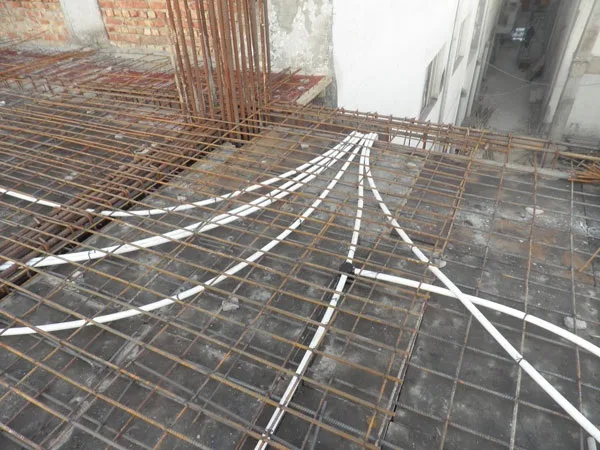Welcome to the realm of home systems, where the intricate networks of steel piping, wiring, and electrical components orchestrate the harmony of your living space. Whether you’re embarking on a new build or contemplating upgrades to your existing home, understanding the fundamentals of these crucial systems is paramount. From the circulation of water and drainage to the intricacies of electrical wiring and the sophistication of HVAC solutions, each aspect contributes to the comfort and safety of your dwelling.
In some instances, such as the installation of key elements like generators, seeking professional assistance is not just beneficial but often necessary. If you’re actively searching for reliable services, including generator installation near you, it’s crucial to connect with seasoned professionals who are well-versed in local codes and regulations. In this comprehensive guide, we will navigate through the essentials of home piping, wiring, and electrical systems, providing you with insights to make informed decisions about your home infrastructure. Join us as we explore the intricacies of these vital components and discover the best practices for ensuring they work seamlessly together, all while exploring the convenience of generator installation near you.
A. Piping Systems:
- Water Supply:
- Materials: Common materials for water pipes include copper, PEX (cross-linked polyethylene), and PVC (polyvinyl chloride).
- Pressure: Water pressure is regulated by a pressure-reducing valve to ensure it’s within safe limits.
- Hot Water: Hot water pipes are often insulated to conserve energy and maintain temperature.
- Drainage and Sewer:
- Materials: Drainage pipes are typically made of PVC or ABS (acrylonitrile-butadiene-styrene).
- Ventilation: Proper venting prevents sewer gases from entering the home and allows for smooth drainage.
- Gas Lines:
- Materials: Common materials include black steel, copper, and flexible piping (CSST).
- Safety: Gas lines require careful installation and regular inspections to prevent leaks, which can be hazardous.
B. Wiring Systems:
- Electrical Wiring:
- Materials: Common types include Romex (non-metallic sheathed cable), THHN/THWN (individual wires in conduit), and BX (armored cable).
- Circuits: Homes have separate circuits for lighting, outlets, and appliances, each protected by circuit breakers or fuses.
- Outlets and Switches:
- GFCI Outlets: Ground Fault Circuit Interrupter outlets are installed in areas prone to moisture to prevent electrical shocks.
- Switches: Three-way switches allow control of a light or receptacle from two locations.
- Service Panel:
- Main Breaker: The main breaker in the service panel controls power to the entire house.
- Branch Circuits: Individual circuits branch off the main panel to distribute power throughout the home.
C. Electrical Systems:
- Lighting:
- Types: Lighting can be incandescent, fluorescent, LED, or other types, each with its own energy efficiency and characteristics.
- Dimmer Switches: Dimmers provide control over the intensity of the light and can help save energy.
- HVAC Systems:
- Thermostats: Programmable thermostats allow control over heating and cooling systems for energy efficiency.
- Ductwork: Properly designed and insulated ductwork ensures efficient distribution of air throughout the home.
- Safety Systems:
- Smoke Detectors: Install smoke detectors in key areas and regularly test them to ensure functionality.
- Carbon Monoxide Detectors: Important for homes with fuel-burning appliances, as carbon monoxide is a colorless and odorless gas.
Conclusion
In conclusion, understanding the intricate web of home infrastructure—from the pipelines that carry life-sustaining water to the wires that power our modern conveniences—is key to creating a secure and comfortable living environment. Whether you’re navigating the maze of electrical circuits, ensuring proper ventilation in drainage systems, or contemplating the installation of crucial components like generators, the expertise of professionals is often indispensable.
As you embark on maintaining, upgrading, or repairing your home systems, it’s crucial to have a reliable network of professionals. From generator installations to addressing unforeseen challenges like leaky pipes, having access to quality services is paramount. If you find yourself in need of immediate assistance, whether for generator installation or pipe repair near you, it’s advisable to connect with local experts who can swiftly and efficiently address your concerns. Your home’s longevity and your peace of mind hinge on the meticulous care given to these critical systems.
In your pursuit of a well-functioning, safe, and efficient home, we hope this guide has empowered you with knowledge. Remember, whether it’s optimizing your electrical circuits or ensuring water flows smoothly through your pipes, a proactive approach and the right professionals by your side can make all the difference. Here’s to a home that’s not just a living space but a sanctuary crafted with care and attention to detail.

